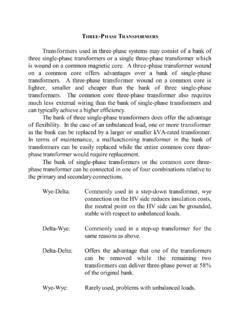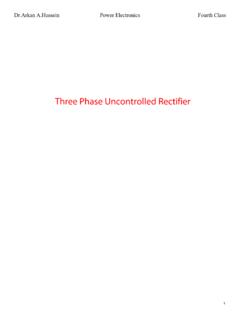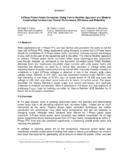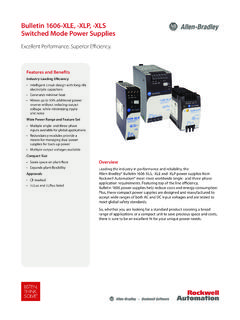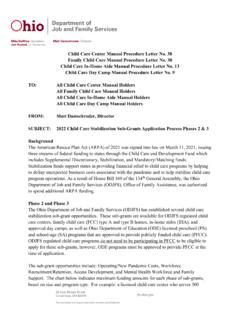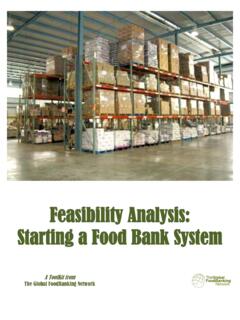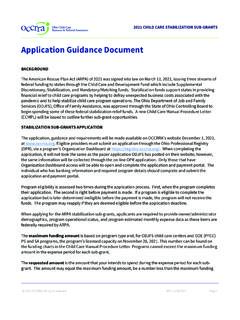Transcription of Hospital Visitation – Phase II Visitation for Patients who ...
1 06/26/20201 Hospital Visitation Phase II Visitation for Patients who are Covid-19 NegativeAs healthcare organizations enter Phase II of reopening from the Covid-19 pandemic, and begin preparations for expanding their non-emergent, non-COVID-19 care (NCC), the issue of patient Visitation also needs to be considered. Separate guidance has been issued for Nursing Home Visitation . Because Hospital Patients are vulnerable to potential COVID-19 infection, CMS does not recommend completely reopening facilities to visitors until Phase III.
2 However, CMS also recognizes the significant toll of separation of Patients from family and other loved ones. In collaboration with State and local public health authorities, hospitals should develop plans for visitors that both consider patient and public health safety, as well as the emotional and care needs of Patients and their families who are facing illness or life-events in separation. As facilities enter Phase II, facilities may consider additional flexibilities so that Patients and their families can visit.
3 1. Can Patients in the Hospital have visitors? Current guidance states that Hospital Visitation not be allowed during Phase I and Phase II; unrestricted Visitation should only be re-started once a facility reaches Phase III. 2. Are there discretionary exceptions to the non- Visitation policy? As organizations begin to expand their non-emergent, non-COVID-19 care in Phase I and II, they can also consider discretionary exceptions to their Visitation policies. Some exceptions may be desired under limited circumstances for Visitation to facilitate patient support.
4 3. What factors should hospitals consider when making decisions about Visitation ? CMS encourages that any decisions to relax requirements or conduct creative alternatives to Visitation within hospitals be made in coordination with state and local officials after a careful review of facility-level, community and state factors or orders. The following should be considered as part of a comprehensive reopening plan: a. Prevalence of COVID in the community b. Prevalence of COVID in the facilityc. Staffing levelsd.
5 Personal Protective Equipment suppliesAs hospitals explore Visitation options they are still responsible for both care and transmission prevention of COVID-19. 4. What principles should all facilities adhere to in considering Visitation exceptions? At all times facilities should adhere to the following principles:a. In-person Visitation should be limited to the greatest extent Virtual Visitation should be encouraged as much as possible. Facilities should make every effort to provide tools for virtual visits, as well as daily virtual staff connection with a designated caregiver or family member.
6 06/26/20202c. All in-person visitors should be screened for symptoms, temperature taken, and asked about possible exposure to SARS-CoV-2. Any individual with symptoms or who has been advised to self-quarantine because of exposure should be prohibited from We also recommend universal source control (wearing a cloth face covering) for all visitors for the duration of their visit. Visitors should also maintain hand hygiene and appropriate social distancing. e. No more than 1 visitor per patient should be allowed at a time.
7 Facilities may wish to consider Visitation appointments to ensure there is not a large burden of visitors in any one facility. f. Visitors should enter through designated entrances where they can be screened each time they enter, and follow designated routes within the facility. g. Visitors may consider SARS-CoV-2 testing for themselves, but that should not change the approach to screening for symptoms, signs and exposure. Even if a visitor has voluntarily been tested and is negative, the above principles, including screening and limitation of visitors should be followed.
8 H. Visitors must be limited to the patient room (not visit other Patients or areas). Meetings with the staff should be in the patient recommendations apply only to Patients who test negative for SARS CoV-2 or who are not suspected of having COVID-19. For those Patients who are COVID Positive, additional considerations are needed to prevent transmission to the visitor and may preclude any Visitation . Virtual Visitation may be a way to connect the patient with their family in this What are examples of special circumstances which facilities may wish to consider under which Hospital Visitation may be allowed?
9 Special circumstances, in which family/caregiver presence may be especially important include: a. End of life care, including clergy Visitation for end of life care and Patients who have elected hospice and are pending discharge. b. Labor and Deliveryc. Pediatric care where parent or legal guardian is requiredd. Inpatient hospicee. In person training of caregiver is considered essential, and may permit training more than one caregiver providing social distancing and other precautions are Reasonable access to support person(s)
10 For Patients with disabilities, for example Patients with cognitive or developmental disabilities who require presence of legal At the discretion and order of the Hospital attending physician where having a family member would be of significant benefit to the patient s clinical care (for example Patients with complex or prolonged hospitalization).06/26/202036. Are there physical circumstances whereby Visitation could be safely considered? Physical environmental protections for Visitation might include:a.











